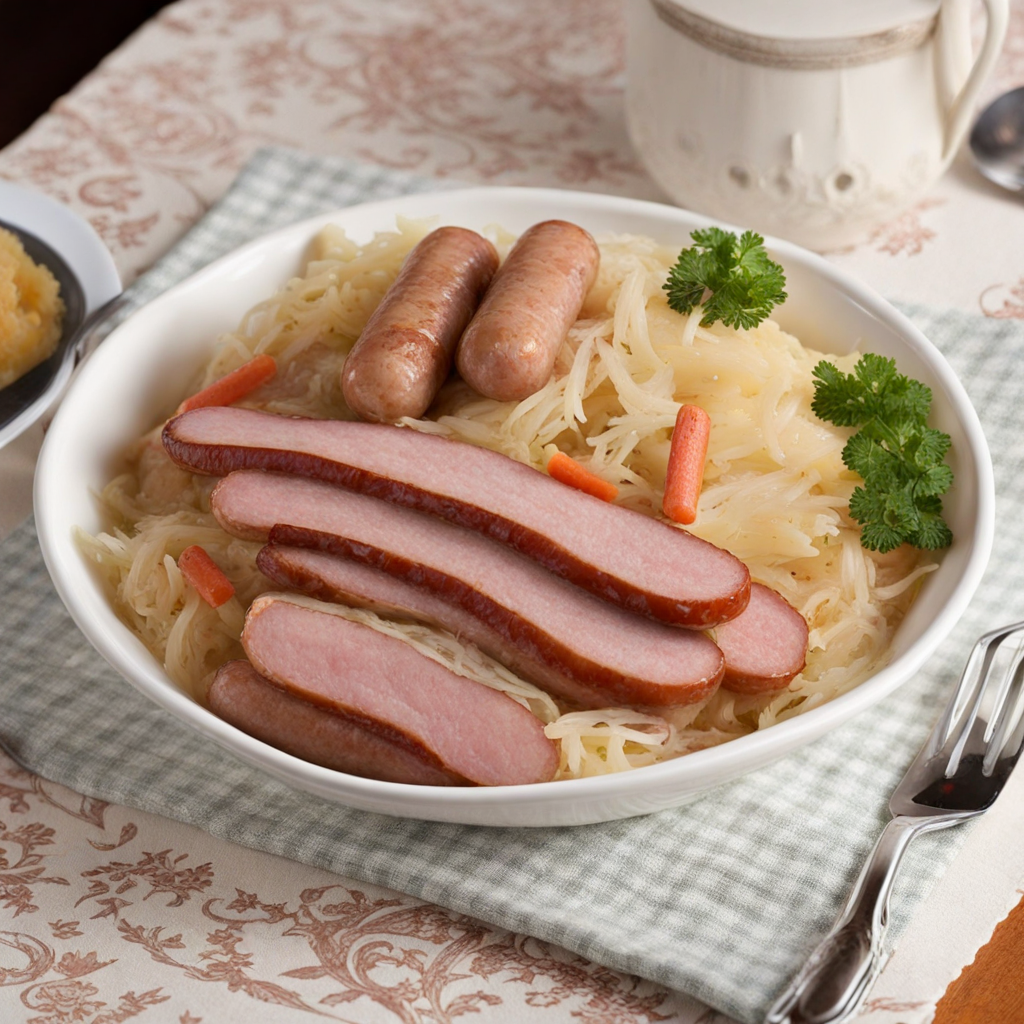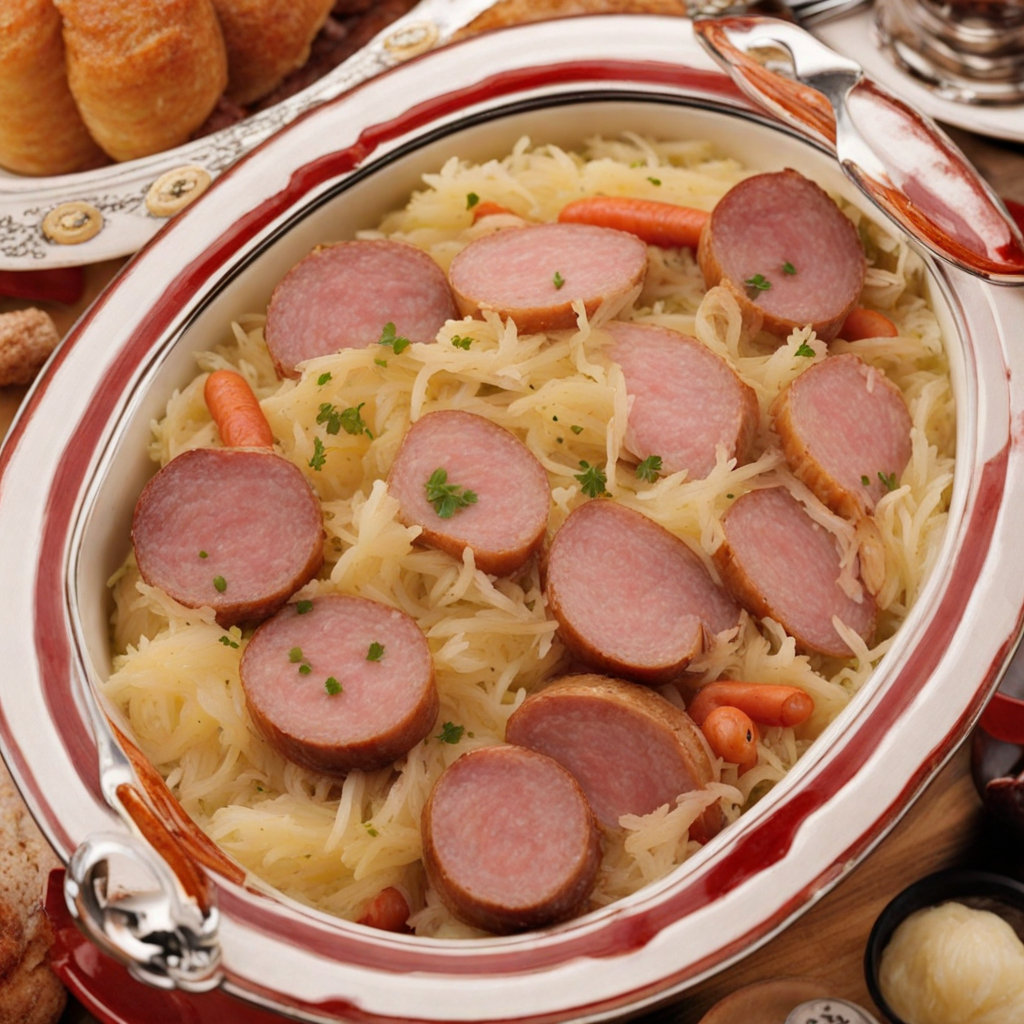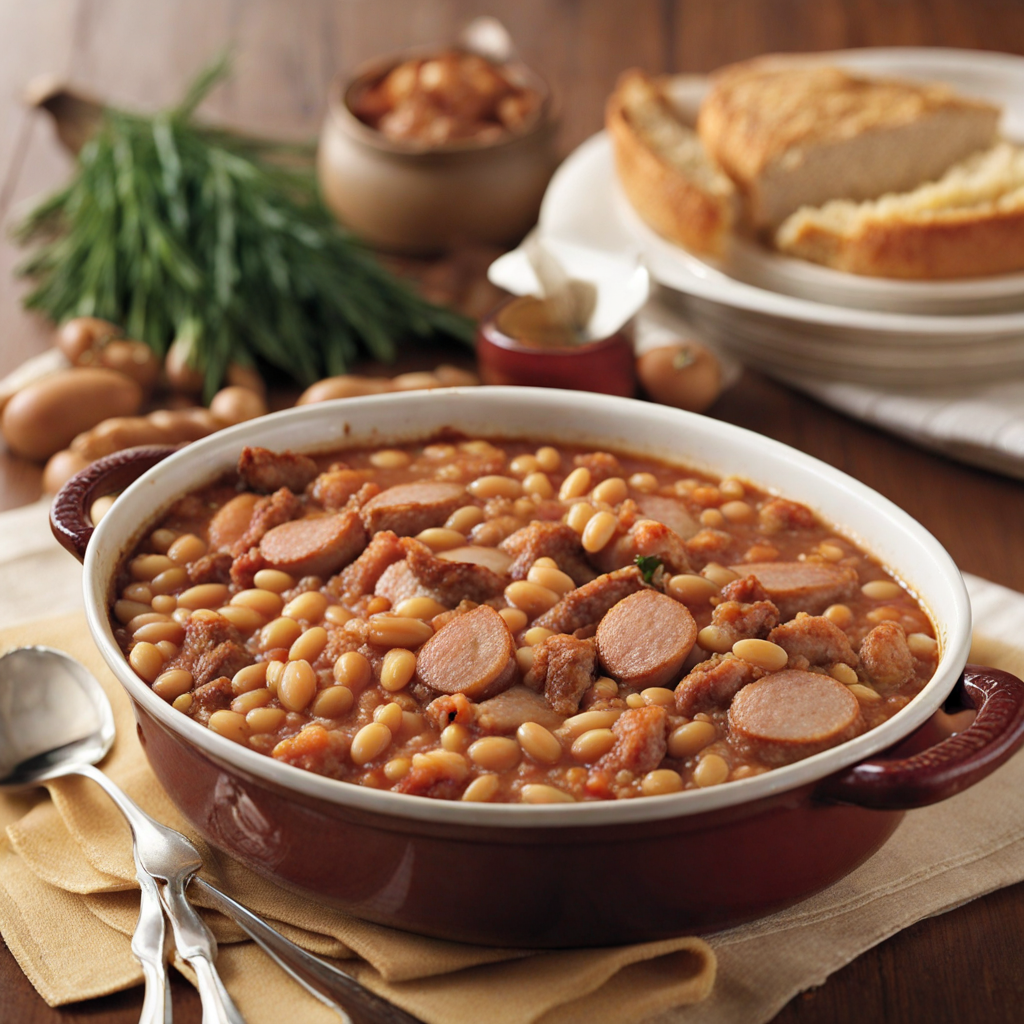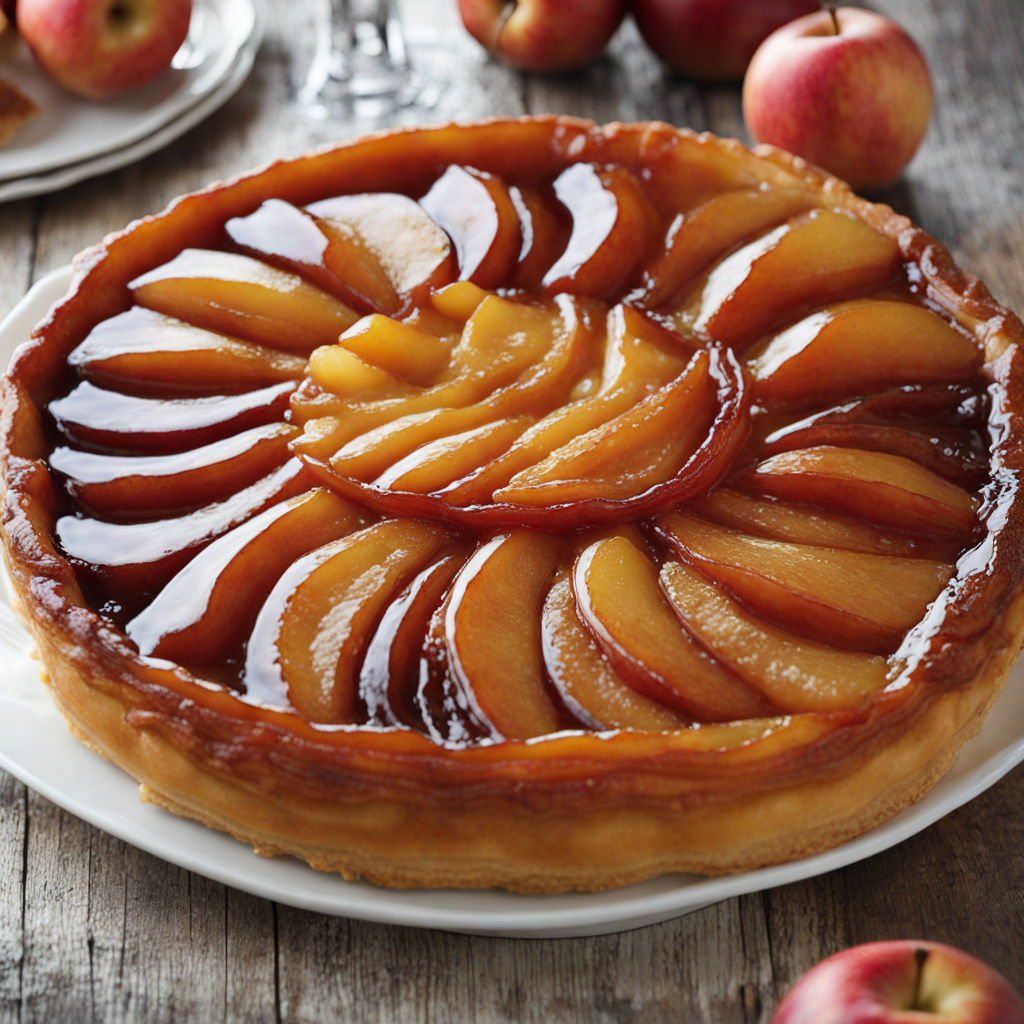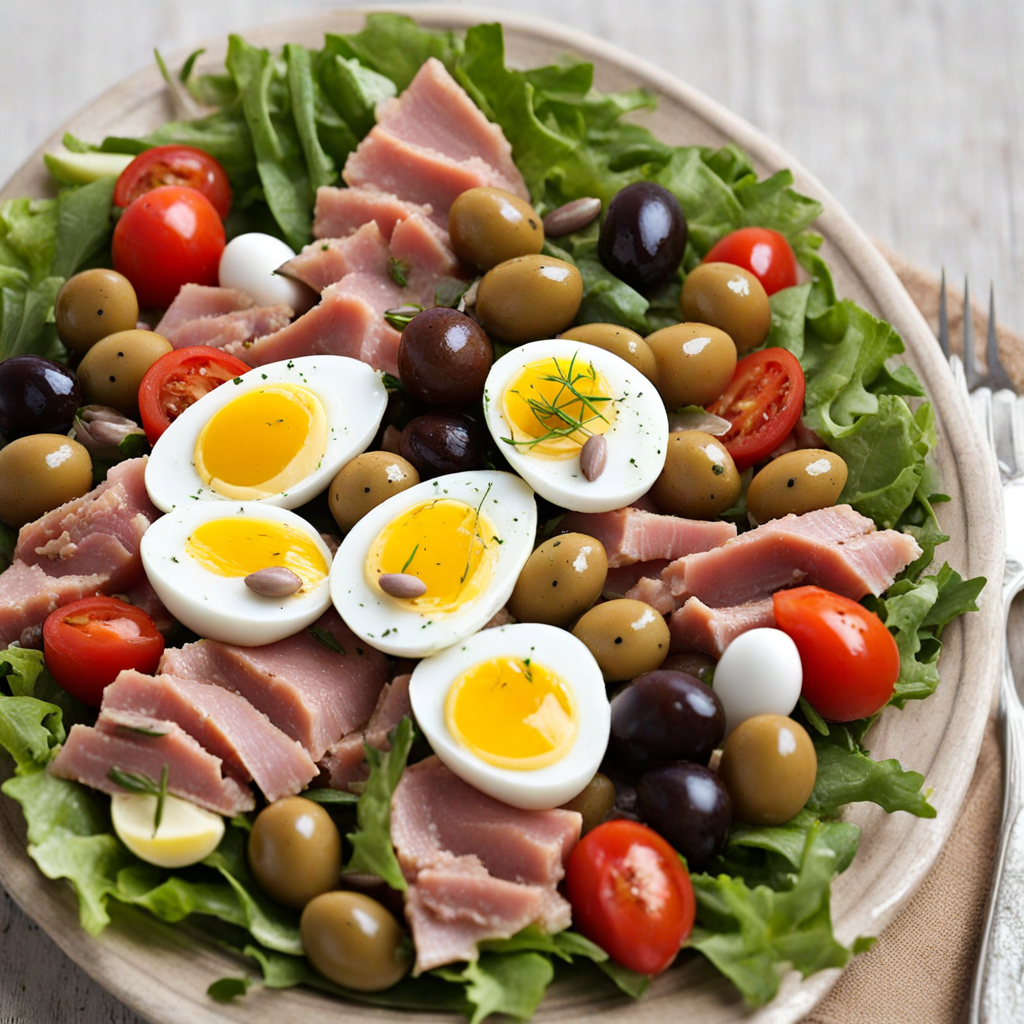Choucroute Garnie
Choucroute Garnie is a traditional dish from the Alsace region of France, renowned for its hearty and comforting flavors. At its core, this dish features sauerkraut, which is fermented cabbage that provides a tangy and slightly sour base. The sauerkraut is typically sautéed with onions, white wine, and spices like juniper berries, creating a fragrant and flavorful foundation. This fermentation not only enhances the taste but also adds a unique depth of umami that is characteristic of Alsace cuisine. What truly sets Choucroute Garnie apart is the array of meats that accompany the sauerkraut. A variety of sausages, such as bratwurst and Toulouse sausage, as well as smoked meats like ham hocks and pork belly, are layered on top of the sauerkraut. Each meat contributes its own richness and smokiness, infusing the dish with a medley of flavors that meld beautifully together during the cooking process. The result is a deeply satisfying meal that offers both texture and taste in every bite. Served piping hot, Choucroute Garnie is often enjoyed with a side of boiled potatoes or crusty bread, making it a filling and indulgent dish perfect for colder months. The combination of the tartness of the cabbage, the savory notes of the meats, and the aromatic spices creates a balance that is uniquely delightful. This dish not only reflects the rustic charm of Alsace but also invites you to experience the rich culinary traditions of France, making it a must-try for anyone seeking to explore new flavors.
How It Became This Dish
Choucroute Garnie: A Historical and Cultural Exploration Choucroute garnie, a dish that embodies the culinary spirit of Alsace, France, is more than just a meal; it is a reflection of the region's rich history, its cultural intersections, and the evolution of its gastronomic practices. This dish, which translates to "garnished sauerkraut," consists primarily of fermented cabbage (sauerkraut) accompanied by a variety of meats, typically including sausages, pork knuckles, and sometimes duck or other meats, all seasoned with juniper berries and served with potatoes. To appreciate choucroute garnie fully, one must delve into its origins, cultural significance, and historical development. Origins of Choucroute The roots of choucroute can be traced back to the ancient practice of fermenting cabbage, which has been prevalent in various cultures throughout history. The process of fermentation not only preserved food but also enriched its flavor, a practice that dates back thousands of years. It is believed that the technique of fermenting vegetables was introduced to the region by the Celts and later adopted by the Romans, who recognized its usefulness in preserving food for winter months. The word "choucroute" itself is derived from the Alsatian dialect, originating from the German word "Sauerkraut," which means "sour cabbage." The Alsace region, located along the Rhine River, has a long history of cultural blending, influenced by both French and German traditions. This melding of cultures is evident in the culinary practices of Alsace, where choucroute garnie emerged as a staple dish. By the 18th century, choucroute garnie began to take its recognizable form, featuring not just the fermented cabbage but an array of meats, showcasing the agricultural bounty of the region. Cultural Significance Choucroute garnie is not merely a dish; it is a symbol of Alsatian identity and heritage. The preparation and consumption of choucroute are often associated with communal gatherings, particularly during the colder months. Traditionally, it is prepared during the winter, especially for festive occasions such as Christmas and New Year’s celebrations. The dish’s hearty composition reflects the need for sustenance during the harsh winter months, providing warmth and nourishment to families and communities. In Alsace, choucroute garnie is often enjoyed with a glass of local white wine, particularly Riesling or Gewürztraminer. This pairing enhances the flavors and showcases the region's winemaking prowess. The tradition of sharing a meal of choucroute garnie fosters a sense of community, as families and friends gather around the table, celebrating their heritage and the bounty of their land. Moreover, choucroute garnie is often featured in restaurants and bistros throughout Alsace and beyond, serving as a testament to the region’s culinary prowess. Its presence on menus signifies not only a connection to local traditions but also a recognition of the dish’s place within the broader context of French cuisine. The dish has also found its way into French gastronomy as a whole, celebrated in culinary festivals and recognized for its importance in the country’s diverse culinary landscape. Development Over Time As with many traditional dishes, choucroute garnie has evolved over the centuries. Initially, the dish was a simple preparation of fermented cabbage served with whatever meats were available, often reflecting the rural lifestyle of the Alsatian people. The use of pork, particularly, became prominent due to the region's tradition of pig farming. The dish's composition varied by household and season, with families adding whatever they could source from their farms or local markets. In the 19th century, choucroute garnie began to gain popularity beyond the borders of Alsace, particularly as Alsace became a focal point of French and German interactions. The dish was embraced by both cultures, with each bringing its own nuances to the recipe. French chefs began to refine the dish, emphasizing presentation and culinary techniques, which further popularized choucroute garnie in fine dining establishments. The advent of the 20th century brought significant changes, particularly following the two World Wars, which greatly impacted the Alsace region. The cultural shifts led to a resurgence of interest in traditional dishes as a means of reconnecting with heritage. Chefs began to experiment with choucroute garnie, incorporating modern cooking techniques while respecting the traditional roots. This led to an array of interpretations that showcased the versatility of the dish, allowing it to adapt to contemporary tastes while retaining its historical essence. Contemporary Choucroute Garnie In recent years, choucroute garnie has experienced a renaissance, celebrated not only in Alsace but across France and around the world. Chefs have embraced the dish, reimagining it while still honoring its traditional roots. This resurgence can be attributed to a growing interest in regional cuisines and a desire to preserve culinary heritage. Additionally, the farm-to-table movement has encouraged chefs to source local ingredients, which is vital for authentic choucroute garnie, as the quality of the cabbage and meats plays a crucial role in the dish's success. Today, choucroute garnie is featured in various culinary festivals, showcasing its enduring appeal. It is not uncommon to find variations that include different types of meats or even vegetarian adaptations, reflecting modern dietary preferences while still paying homage to the original concept. The dish's ability to adapt while remaining intrinsically linked to its roots speaks to its resilience and significance in French culinary culture. Conclusion Choucroute garnie stands as a testament to the rich tapestry of Alsatian culture, embodying the region's history, agricultural practices, and communal spirit. From its ancient origins in fermented cabbage to its modern interpretations in fine dining, choucroute garnie serves as a delicious reminder of the importance of food in shaping identity and bringing people together. It is a dish that invites us not only to savor its flavors but also to appreciate the stories and traditions that have been woven into its very essence. As we enjoy this hearty meal, we partake in a culinary journey that transcends time and place, celebrating the enduring legacy of choucroute garnie.
You may like
Discover local flavors from France


